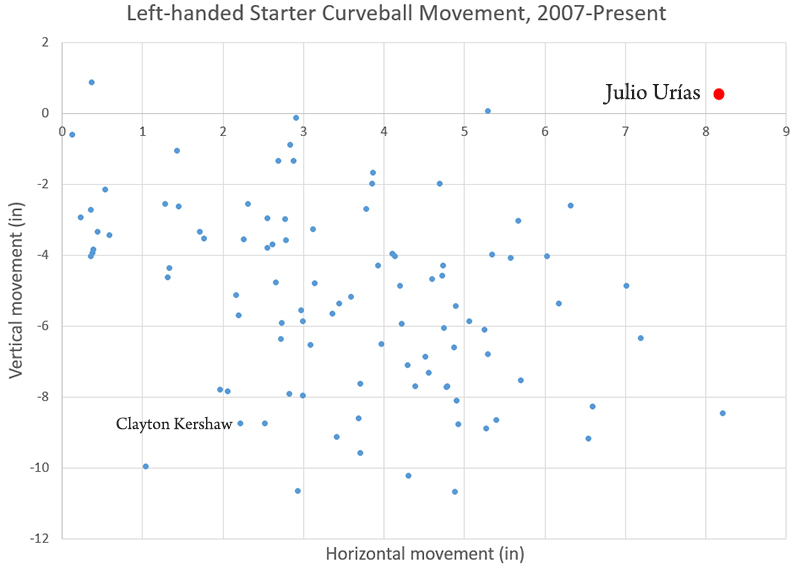This is Julio Urías‘ curveball:
You may not be able to tell from watching it, but it’s really weird. The curve sweeps across the zone and does not drop much. It turns out that this kind of action on a curveball is extremely rare for a left-handed starting pitcher. Urías has thrown 41 curves in his young career. Those pitches have averaged 78 mph, with +0.5in of vertical break and 8.2 inches of horizontal break. Positive vertical break on a curve is very strange (and usually indicates a very low arm slot, which Urías does not have).
97 left-handed starters have thrown at least 200 curves in the pitch FX era. Here is a plot of their movement, with Urías added:
He’s by himself. If you add in right-handed starters, Yusmeiro Petit and Bronson Arroyo end up relatively close, but they both have less horizontal break and are fairly far separated in the vertical direction. Petit is a close velocity comparable, but Arroyo is pretty far off. Neither would face the same issues that the platoon splits of such a pitch would create.
What does this mean? It’s hard to say so far. Of the 41 curves Urías has thrown, 30 have been watched by the batters (18 balls, 12 called strikes). Of the 11 swings, two were whiffs and four were fouled off. The remaining five were put in play and resulted in one grounder, two liners, and two fly balls (including a homer).
Those results are certainly not great, but given Urías’ command issues and the small sample of his major league career thus far, all of this could still change. Given the path of the pitch, you could expect it to be more platoon-sensitive than the average curveball. If Urías can’t spot it inside to right-handed batters (or backdoor it for a called strike), the pitch could be extremely hittable. Urías hasn’t been varying the platoon usage on this pitch yet but it may be something to keep an eye on going forward.
 Dodgers Digest Los Angeles Dodgers Baseball Blog
Dodgers Digest Los Angeles Dodgers Baseball Blog
